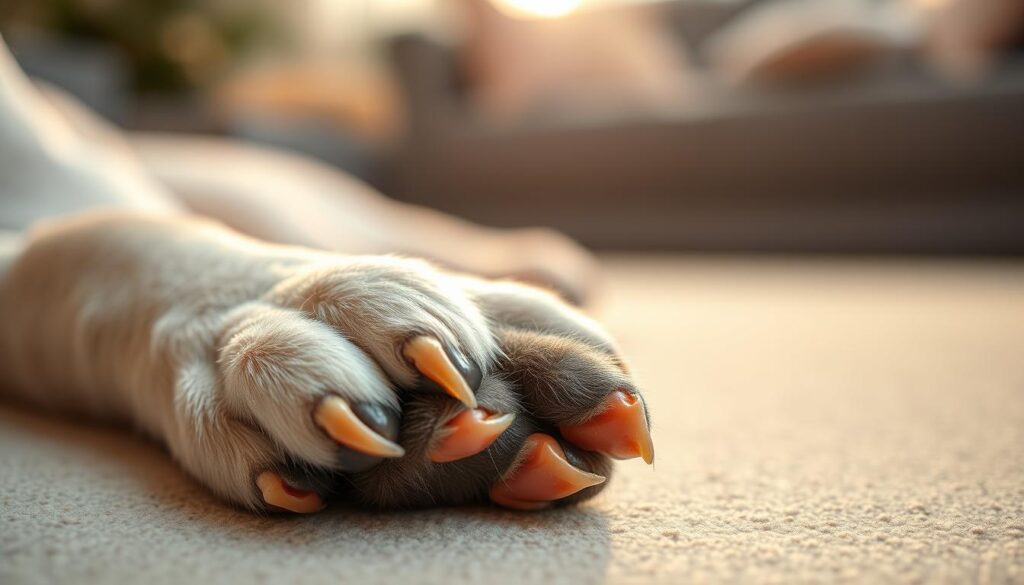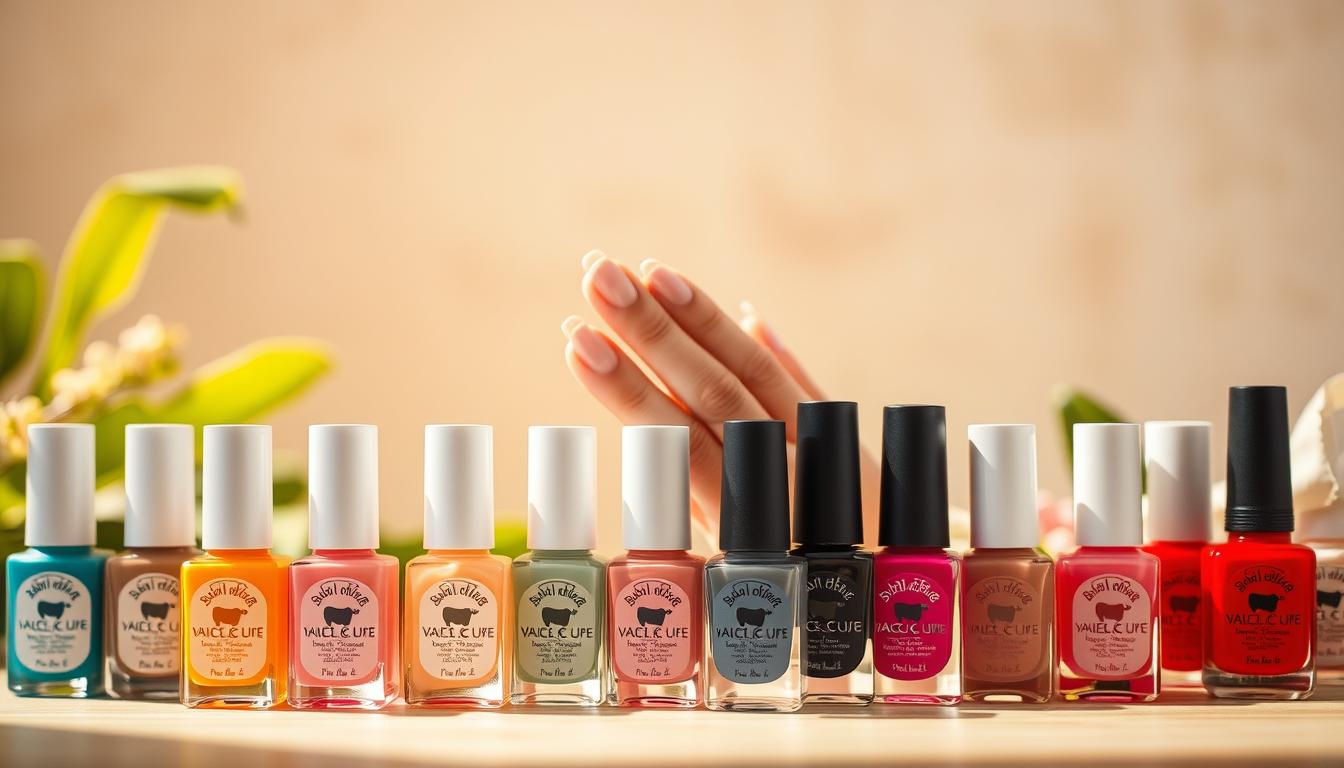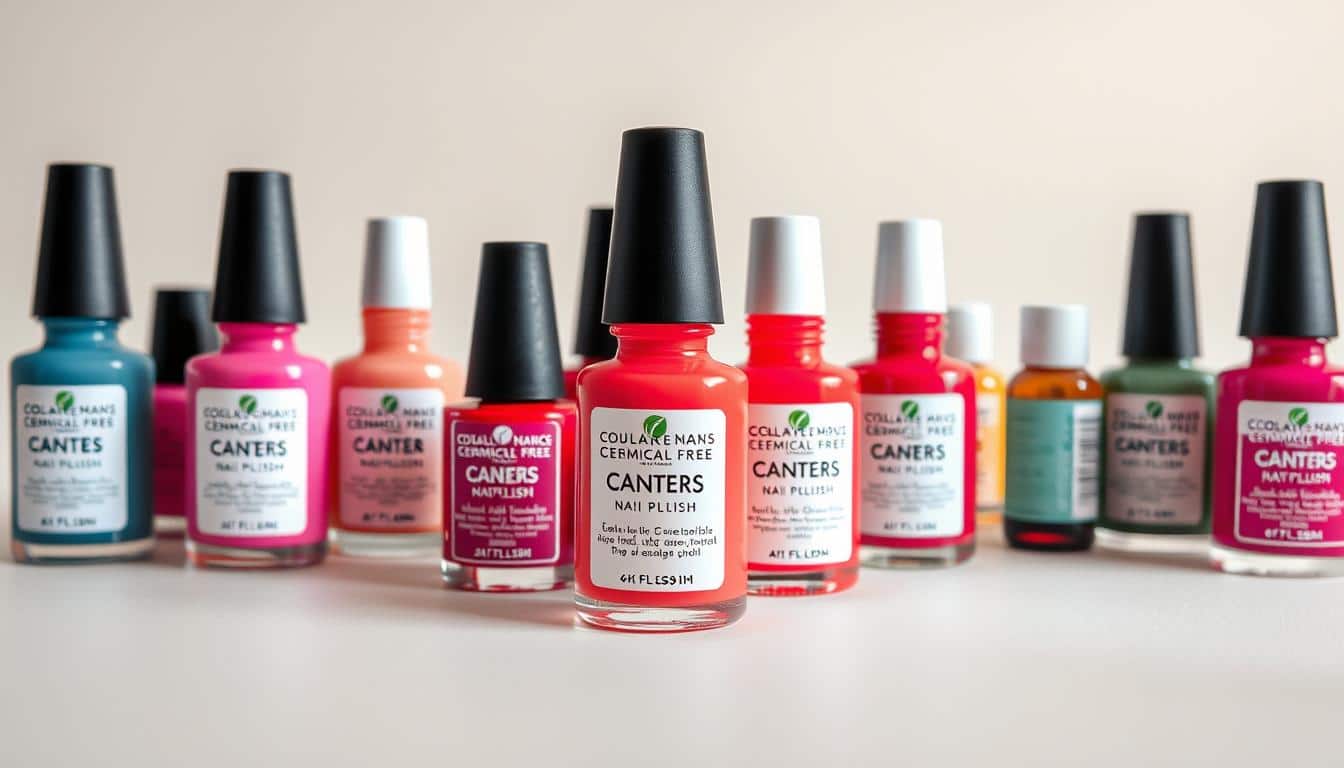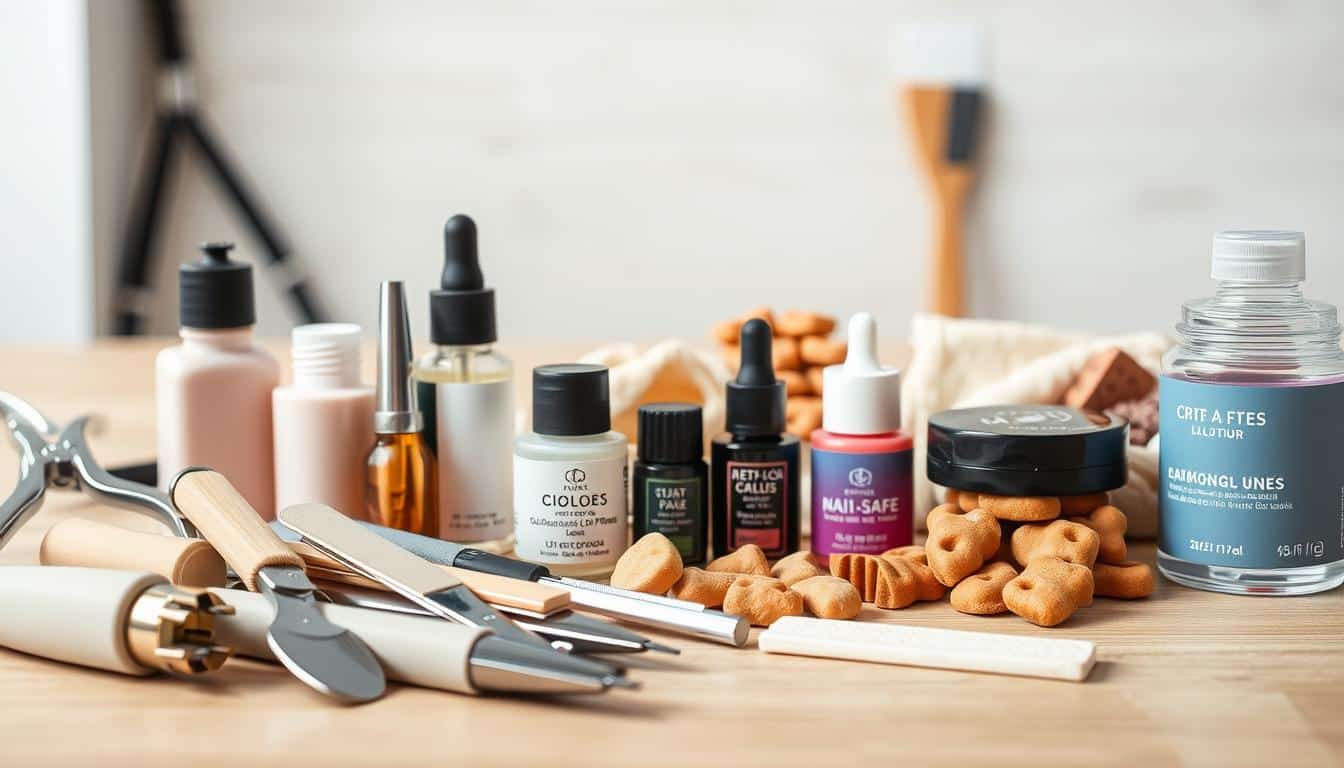Anúncios
Taking care of your pet’s nails is a key part of keeping them happy and healthy. It’s not just about looks; regular nail care prevents painful problems that could affect their ability to play and explore. This piece will show you how to safely trim nails, highlighting the right practices and tools. By using these tips, you’re helping your pet stay comfortable and healthy for a long time.
Understanding the Importance of Nail Care
Nail care is key for pet health. Overgrown nails can cause many problems such as discomfort and injuries. Pets with long nails might walk differently. This can lead to muscle issues and long-term problems with walking.
It’s crucial to trim nails regularly to prevent these issues. Long nails can hurt because they press on sensitive skin. They can also cause infections if caught on things. Short nails keep pets happy and healthy.
Proper nail length helps with better blood flow. It also lowers the chance of back pain and other health issues. Nail trimming is very important for a pet’s life quality. By focusing on nail care, pets stay active and without pain.

Signs Your Pet Needs Nail Trimming
Nail care keeps your pets healthy and comfy. Knowing when nails are too long is key. Pets show signs when it’s time for a trim.
Listen for a clicking noise as your pet walks. This means the nails are too long. Check their paws to see if nails curve or touch the ground. If your pet doesn’t want to walk or licks their paws a lot, their nails might be too long. If they limp, they need their nails cut right away.
It’s important to frequently check your pet’s nails. This prevents painful ingrown nails and keeps their paws healthy. By keeping track of nail length, you ensure your pet stays comfortable and moves easily.
Getting Your Pet Comfortable with Nail Care
Getting your pet used to nail trimming can seem hard. It’s important for their comfort. Gradually introducing your pet to nail care can ease their fears. Positive reinforcement can help make them less anxious about nail trimming.
Gradual Acclimation Techniques
To start, ease your pet into the nail trimming routine with simple steps:
- Gently handle your pet’s paws while they are relaxed.
- Let them sniff and check out the nail clippers or grinders.
- Touch their paws and pretend to trim without actually cutting the nails.
- Take your time with these steps, over a week, making sure they feel safe.
The Role of Positive Reinforcement
Positive reinforcement can help create a good feeling about nail trimming. Try these tips:
- Give treats after each step to encourage their comfort with the process.
- Show them love and praise to boost their confidence during nail care.
- If they get anxious, don’t get upset. Just go back to an easier step until they’re okay.
Using these tips, keeping your pet’s unique personality in mind, will help make nail trimming easier for both of you.
Safe Nail Care for Pets
Taking care of your pet’s nails safely is key for their well-being and your ease. Pick dog-safe trimmers or grinders for better nail care that’s less scary for your pet. Always have the right tools like styptic powder ready to handle any slips while trimming.
Keep the grooming area calm and soothing to make nail trimming go smoothly. Treat your pet gently to keep stress levels down. With patience and ongoing practice, nail trimming becomes a positive activity for you and your pet. Stick to these safe nail practices to ensure your pet’s nails stay healthy without causing them stress.
Choosing the Right Nail Trimming Tools
Finding the best nail trimming tools is key for a safe and good grooming time for your pet. There are many kinds to choose from, meant for different needs. Knowing about these will help you give your pet top-notch nail care.
Types of Nail Trimmers
Here are the main pet nail trimmers:
- Scissor-style clippers: Like scissors, best for medium to big dogs.
- Guillotine-style clippers: Have a hole to put the nail in before cutting. Great for smaller pets.
- Nail grinders: A newer choice that sands down nails softly. It lowers the chance of cuts.
Benefits of Nail Grinders
Nail grinders have lots of pluses over classic nail clippers. The perks include:
- They cut the risk of hitting the quick, which can hurt and bleed.
- They let you shape and smooth the nails, so they don’t catch on stuff.
- They’re quiet, which is better for nervous pets.
To wrap it up, having the right tools for grooming will improve nail care. It makes things easier for you and comfier for your pet.
Proper Techniques for Trimming Nails
Learning how to trim nails right can make the experience safe and comfy for pets. Knowing where the quick is in the nail is crucial. When you trim nails properly, you prevent hurting your pet.
Identifying the Quick in Light and Dark Nails
It’s easier to see the quick in light-colored nails because it looks pink through the nail. But, dark nails are a bit tricky. Here, you must trim little by little. Keep going until you see a light gray or black spot. That’s the start of the quick. Good lighting can help you see better, so you don’t cut too deep.
Step-by-Step Nail Trimming Process
Following a step-by-step guide makes nail trimming easier and less stressful. Here are the steps:
- First, hold your pet’s paw gently to make them feel safe.
- Angle the trimmer at 45 degrees to avoid cutting too deep.
- Trim little bits off the nail tip. Watch out for the quick.
- Keep an eye on the nail’s color, especially with dark nails, to avoid the quick.
- Give your pet some praise or a treat after each trim. It makes grooming a happy time.
Handling Common Nail Trimming Issues
Nail trimming can be tough for pet owners. Problems can include cutting the quick or dealing with pet anxiety. Knowing how to handle these issues makes nail trimming safer and more comfortable for pets and their owners.
What to Do If You Cut the Quick
Sometimes you might accidentally cut the quick. This can make the nail bleed and scare you and your pet. Here’s what you can do:
- Apply styptic powder or cornstarch to the bleeding nail to help stop the blood.
- Keep your pet calm. Use a gentle voice to comfort them.
- Take a break. This helps avoid more stress before you continue trimming.
Managing Your Pet’s Anxiety During Trimming
Keeping your pet calm during nail trimming is important. Here are some tips:
- Make the area quiet and free of distractions.
- Try calming sprays or lavender oils to help relax your pet.
- Give your pet treats and praise for staying calm during the trim.
- Let your pet get used to the trimming tools before you start.
With the right approach, nail trimming can be an easy task. Pet owners can feel confident, and pets can have a stress-free experience.
Maintaining Nail Health: Frequency and Care
Keeping your pet’s nails trimmed is key to their happiness and health. How often you should trim depends on their breed, age, and how active they are. Aim to trim their nails every 3-4 weeks. Checking their nails regularly is important to avoid any pain caused by overgrowth.
How Often Should You Trim Your Pet’s Nails?
Each pet has different needs for nail care. Pets that run around a lot might not need their nails cut as often. But pets who don’t get as much exercise might need trims more frequently. Make sure to tailor your nail trimming schedule to fit your pet’s lifestyle and keep their nails healthy.
Signs of Overgrown Nails
It’s important to watch out for signs of nails that are too long. These signs include:
- Nails clicking on the floor when walking
- Curling into the paw pads
- Pain or discomfort when walking or running
- Visible elongation beyond the paw line
If you see any of these signs, it’s time to trim their nails right away. Not doing so can hurt your pet’s ability to move and lower their quality of life.
Conclusion
Safe nail care is key for keeping pets healthy and comfy. It’s not just about looks; it keeps pets from pain and health problems. Adding safe nail trimming to your routine helps your pet’s health and happiness.
Using the right methods and tools is basic for good nail care. Creating a calm space with positive vibes helps pets feel less scared during grooming. This builds trust between you and your pet and makes grooming better for both.
Looking after your pet’s nails regularly makes them happier. It also gives you peace of mind about their health and safety. By doing nail care often, your pets will have the best life possible.



